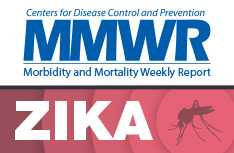Outcomes of Pregnancies with Laboratory Evidence of Possible Zika Virus Infection, 2015-2017
The following numbers represent completed pregnancies, liveborn infants with birth defects, and pregnancy losses with birth defects that have been associated with possible Zika virus infection. Any birth defects that have not been associated with Zika virus infection are not shown in these numbers, even if the pregnancies are affected by another type of birth defect.
Completed pregnancies with or without birth defects
1,901
Liveborn infants with birth defects
98
Pregnancy losses with birth defects
8
As of September 13, 2017, a total of 39 additional completed pregnancies with or without birth defects in the US States and the District of Colombia have been included since August 22, 2017.
Completed pregnancies with or without birth defects
3,338
Liveborn infants with birth defects
138
Pregnancy losses with birth defects
8
As of September 13, 2017, a total of 80 additional completed pregnancies with or without birth defects in the US territories and freely associated states have been included since August 22, 2017.
What these numbers show
The number of completed pregnancies with or without birth defects associated with possible Zika virus infection includes live births, miscarriages, stillbirths, and terminations. Researchers use the standard CDC Zika birth defect surveillance case definition for the Zika Pregnancy and Infant Registries to determine the liveborn infants with birth defects and pregnancy losses with birth defects. All of these numbers may increase or decrease as new cases are added, or information on existing cases is clarified.
The numbers are separated into two categories:
- The 50 US States and the District of Columbia, and
- The US territories and freely associated states.
The birth defects reported in these numbers are possibly linked to Zika virus infection during pregnancy. These include
- Microcephaly,
- Calcium deposits in the brain indicating possible brain damage,
- Excess fluid in the brain cavities and surrounding the brain,
- Absent or poorly formed brain structures,
- Abnormal eye development,
- Confirmed hearing loss,
- Or other problems from damage to the
- Brain that affects nerves, and
- Muscles and bones, such as clubfoot or inflexible joints.
What these new numbers do not show
These numbers reflect the outcomes of pregnancies with laboratory evidence of possible Zika virus infection reported to the Zika Pregnancy and Infant Registries. There may be delays in reporting of pregnancy outcomes, and the numbers will be updated monthly.
All birth defects reported have laboratory evidence of possible Zika virus infection. However, we cannot determine if individual defects were caused by Zika virus infection or other factors.
These numbers do not necessarily indicate recent transmission of Zika virus. The numbers are based on positive laboratory tests at the time of testing or report. Some of these laboratory tests can produce a positive result weeks after Zika virus infection has occurred. For more information about these laboratory tests see the laboratory website.
Where do these numbers come from?
These numbers reflect pregnancies reported to the Zika Pregnancy and Infant Registries. These registries cover all US jurisdictions including the 50 US States, District of Columbia, and the US territories and freely associated states.
These systems were established in collaboration with state, local, tribal, and territorial health departments for comprehensive monitoring of pregnancies and infant outcomes of pregnancies with any laboratory evidence of possible Zika virus infection.
The Zika Pregnancy and Infant Registries are protected by an Assurance of Confidentiality. Under the Assurance CDC is not reporting individual state, tribal, territorial, or jurisdictional data to protect the privacy of the women and infants affected by Zika virus.
How are these numbers used?
The data collected through the Zika Pregnancy and Infant Registries will be used to update recommendations for clinical care, to plan for services and support for pregnant women and families affected by Zika virus, and to improve prevention of Zika virus infection during pregnancy regardless of when the infection occurs.
CDC standard case definition for healthcare providers
The following definition explains the CDC standard case definition for birth defects potentially associated with Zika virus infection. This case definition is used to determine the Zika Pregnancy and Infant Registries reporting numbers. These numbers include brain abnormalities and other birth defects with documented associations with Zika virus infection during pregnancy. All pregnancy outcomes are monitored, but reporting of birth defects is limited to those meeting the following criteria.
Congenital Zika Syndrome – a pattern of birth defects that occurs in fetuses and infants infected with Zika virus before birth.
Brain abnormalities with and without microcephaly
- Confirmed or possible congenital microcephaly*
- Intracranial calcifications
- Cerebral atrophy
- Abnormal cortical formation (e.g., polymicrogyria, lissencephaly, pachygyria, schizencephaly, gray matter heterotopia)
- Corpus callosum abnormalities
- Cerebellar abnormalities
- Porencephaly
- Hydranencephaly
- Ventriculomegaly / hydrocephaly (excluding “mild” ventriculomegaly without other brain abnormalities)
- Fetal brain disruption sequence (collapsed skull, overlapping sutures, prominent occipital bone, scalp rugae)
- Other major brain abnormalities
Neural tube defects and other early brain malformations
- Neural tube defects (NTD)
- Anencephaly / Acrania
- Encephalocele
- Spina bifida
- Holoprosencephaly / Arhinencephaly
Structural eye abnormalities
- Anophthalmia/ Microphthalmia
- Coloboma
- Cataract
- Intraocular calcifications
- Chorioretinal anomalies involving the macula (e.g., chorioretinal atrophy and scarring, macular pallor, gross pigmentary mottling and retinal hemorrhage); excluding retinopathy of prematurity
- Optic nerve atrophy, pallor, and other optic nerve abnormalities
Consequences of central nervous system (CNS) dysfunction
- Congenital contractures (e.g., arthrogryposis, club foot, congenital hip dysplasia) with associated brain abnormalities
- Congenital deafness documented by postnatal testing
*For more information on the clinical guidance for head circumference measurements, see the Congenital Zika Syndrome webpage.
- Page last reviewed: September 29, 2017
- Page last updated: September 29, 2017
- Content source:





 ShareCompartir
ShareCompartir